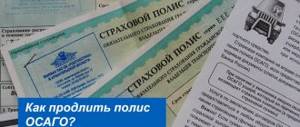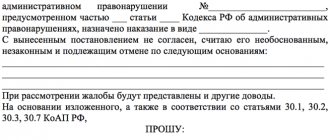OSAGO and experience
Today, almost every vehicle owner knows that when a new person is included in the insurance, the coefficient can change the cost of insurance, increasing it two to three times. This is due to the fact that the new driver has little experience and there are no discounts for experience. When does driving experience begin? A person’s length of service begins from the moment he receives his license and is measured in years. In order not to overpay in the future, it is necessary to understand the algorithm for calculating driver experience.
What is driving experience? It accumulates from the moment you obtain your license for the first time. For example, if the driver received a license in 2010, and now it is 2021, then the experience will be 8 years.
Experience coefficient
When calculating MTPL insurance, a special program applies many different coefficients. There is a coefficient associated with experience. When does driving experience begin? The driver’s experience begins to be calculated from the moment he receives a document giving him the right to drive a motor vehicle. Moreover, its duration will not be affected by the following circumstances:
- presence in the ownership of the driver of the vehicle;
- direct practical driving experience behind the wheel.
How is driving experience considered for compulsory motor liability insurance?
Insurer managers determine the driving experience based on the documents provided by persons who are allowed to drive a car under the concluded MTPL agreement. How to find out the total driving time?
Determination of driving experience
For MTPL insurance, a driving license allows you to determine the continuous time of possession of the right to drive one or another type of transport:
- when granting new rights, the management time is counted from the date of their issuance;
- simultaneously with the replacement of rights, a mark is placed in the newly issued document of the permitted category and the beginning of transport management according to it;
- acquisition of the right to drive a vehicle of an additional category - by entering a note about the date of receipt in section 14 of the license.
The total period of driving a car is determined by the period that begins the next day after receiving the first license until the day of contacting the insurers regarding the issue of a policy.
It should be noted that the calculation is carried out on the basis of the information recorded by the license, regardless of the actual driving of the car during this time (less than three or more years).
How is driving experience considered for compulsory motor liability insurance if there was a deprivation of license?
In accordance with Article 3.8. The Code of Administrative Offenses of the Russian Federation provides for deprivation of a special right, in this case driving a motor vehicle, in cases of systematic, gross violations of the administrative procedure for its application or evasion of other administrative responsibility. How to restore rights? The right to manage in the manner prescribed by law is restored.
At the same time, the law does not provide for the interruption of the driver’s experience, part of the registration of compulsory motor liability insurance policies. It is calculated from the moment of receipt of rights until the time of contacting the insurer.
Peculiarities
The items listed above are not checked and do not affect the final driving experience. And yet, this information has an impact on the calculation of compulsory motor liability insurance. If a person did not drive after he received his license, then he was not included in the MTPL insurance. This means that there is no information about experience in the RSA database, and therefore there are no discounts. For example, a person got his license at the age of twenty, got behind the wheel for the first time and signed up for insurance at the age of twenty-five. According to the rules, his experience is five years. In fact, I had no driving experience. This is the first time information about this driver has been added to the RSA database. Accordingly, the driver’s accident class will be 3. Since he didn’t have one before, even though according to the documents he has five years of experience. Next year (provided that there is no accident), the first discount on compulsory motor liability insurance will appear in the amount of 5% and the accident class will become equal to four.
It is also worth noting that if two drivers received their licenses at the same time, their length of service according to their documents is the same. But this does not mean that their accident class will be the same. For example, one driver immediately got behind the wheel, was included in the insurance and received discounts, while another person started driving a vehicle only after a couple of years. Accordingly, his discounts appeared much later. Thus, even if the documented experience of drivers is the same, this does not mean that the impact of bonuses on compulsory motor liability insurance will be the same.
The cost of entering new information into OSAGO
The cost of entering information about an additional driver is influenced by the following factors:
- age of the person;
- driving experience;
- the time frame for which the person will be authorized to drive;
- the cost of the original insurance policy;
- involvement in accidents while driving.
To determine the final cost of entering the data of another driver, there is the following formula:
(insurance policy price * driving factor - discounted policy price) * driving time (remaining policy period) = cost to be paid for a new driver.
For people who have a long driving record without an accident, when calculating the cost of entering additional information, the following discounts are applied: 5% (4th class), 10% (5th class), 15% (6th class), 20% (7th class), 25% (8th grade).
For drivers who will be included in the MTPL, the following coefficients are used:
Persons under 22 years of age:
- less than 3 years of experience – 1.8;
- experience of more than 3 years – 1.6.
Persons over 22 years of age:
- less than 3 years of experience - 1.7;
- more than 3 years of experience – 1.0.
Driving experience is the time period during which a person drives a vehicle legally. At any age, having received a license, after three years a person will have the necessary experience to reduce the coefficient when applying for compulsory motor liability insurance. A discount is given for not being involved in accidents. This provision applies to persons who have taken out an insurance policy for themselves more than once.
Using the above formula as a basis, you can calculate how much you need to pay extra when entering new information. In the examples below, the primary driver is over 22 years of age and has more than five years of driving experience without being involved in an accident.
Limited list in the MTPL policy
Sometimes drivers are outraged that their accident class is much lower than it should be. If the owner of a vehicle insured the car using insurance without driving restrictions and transferred control to another person, then the persons using the car do not receive discounts on compulsory motor liability insurance. Discounts are awarded only to the owner of the car; accordingly, the class is also increased only for him. This happens because information about the drivers is not included in the insurance policy. Therefore, in order to receive discounts every year and earn the highest class, you must insure your vehicle using a limited list of drivers.
Information about driving experience can be found on your driver's license. After replacement, traffic police officers indicate information about the previous license in the “Special notes” column. If it is necessary to provide accurate data, this information must be taken into account.
How is driving experience calculated for compulsory motor liability insurance in 2021?
Each category of driver's license has its own accounting period for driving a vehicle, which is noted on the license. When a new category is opened, the length of service for it is calculated starting from the day it was received, and not from the moment the initial certificate was issued. At the same time, the total period of driving the car for previously open categories remains unchanged.
The application of such rules for determining the duration of driving when calculating the FAC is enshrined in the Bank of Russia Directive No. 3384-U dated September 19, 2014.
Let’s say a 35-year-old citizen has experience in category B since 2007, and in 2017 he opened category D. In this case, in 2021, when receiving insurance for a passenger car, the period of driving the vehicle will be 13 years, and the age and experience coefficient – 0.96. But when taking out an insurance policy for a bus, the driving experience will be 3 years, and the FAC will be 0.99.
KVS, unlike accident-free experience under the bonus-malus system, does not provide large discounts for the policyholder. Its minimum value can be 0.93 for the most experienced drivers (see table). Most values are used as increasing factors for categories of drivers who have a greater risk of being involved in a traffic accident. And if an experienced car owner includes an inexperienced driver in his insurance, for whom a higher VIC is applied, the policy price for the first of them will be calculated taking into account the increasing indicators for the second.
However, there is the possibility of purchasing an open policy for which the CIC does not apply, or rather, for it it will only be the maximum. Therefore, the price for compulsory motor liability insurance without restrictions and for standard insurance with a PIC value of 1.87 is practically the same. But in the first case, any driver can drive a vehicle without indicating his data in the insurance policy.
The cost of MTPL insurance is calculated based on the base rate and certain indicators. One of these parameters is KVS - the coefficient of age and experience. In contrast to the accident-free experience under the bonus-malus system, KVS provides relatively small discounts for policyholders with extensive experience and age and, on the contrary, significantly increases the cost of a car insurance for inexperienced drivers.
If several people are included in one insurance, then when calculating the final amount of the policy, the CIC will be used at the highest rate that the drivers have.
By the way, the number of drivers who can be allowed to drive one vehicle under one MTPL insurance policy is not limited by law. Many insurers announce that their number is limited by the number of lines on the form (5 pieces). This is false information. All required drivers can be listed on the back of the policy, secured with a blue stamp.
“How is driving experience considered when drawing up an MTPL agreement with an unlimited number of persons?” - some car enthusiasts ask. Lawyer's answer: driving experience is not taken into account when purchasing an “unlimited” policy. This is due to the fact that the circle of persons allowed to drive this vehicle is not listed by name on the policy form. In this case, a coefficient of 1.8 is used, regardless of the number of people, their age and driving experience.
When calculating MTPL insurance, a special program applies many different coefficients. There is a coefficient associated with experience. When does driving experience begin? The driver’s experience begins to be calculated from the moment he receives a document giving him the right to drive a motor vehicle. Moreover, its duration will not be affected by the following circumstances:
- presence in the ownership of the driver of the vehicle;
- direct practical driving experience behind the wheel.
When determining the cost of an insurance policy, insurers take into account multiple factors, but I would like to dwell in more detail on the driver’s age and practical driving experience. As a rule, especially if we are talking about an experienced driver, insurance companies do not take into account his age. The exception is “elderly” drivers who have no driving experience - in this case, advanced age is a reason for increasing insurance rates.
As for driving experience, this is one of the main indicators, and it is taken into account by insurance companies without fail. Drivers with extensive driving experience should not worry about possible overpayments, while inexperienced drivers are very often deceived, which means that you must understand this issue yourself and be able to challenge the decision of the insurance company in case of disagreement. What is important here is not only how long ago the license was issued, but how long the driver was behind the wheel. The “bonus-malus” coefficient is also important - the lower it is, the fewer accidents the owner of the insurance policy has caused.
The items listed above are not checked and do not affect the final driving experience. And yet, this information has an impact on the calculation of compulsory motor liability insurance. If a person did not drive after he received his license, then he was not included in the MTPL insurance. This means that there is no information about experience in the RSA database, and therefore there are no discounts. For example, a person got his license at the age of twenty, got behind the wheel for the first time and signed up for insurance at the age of twenty-five. According to the rules, his experience is five years. In fact, I had no driving experience. This is the first time information about this driver has been added to the RSA database. Accordingly, the driver’s accident class will be 3. Since he didn’t have one before, even though according to the documents he has five years of experience. Next year (provided that there is no accident), the first discount on compulsory motor liability insurance will appear in the amount of 5% and the accident class will become equal to four.
It is also worth noting that if two drivers received their licenses at the same time, their length of service according to their documents is the same. But this does not mean that their accident class will be the same. For example, one driver immediately got behind the wheel, was included in the insurance and received discounts, while another person started driving a vehicle only after a couple of years. Accordingly, his discounts appeared much later. Thus, even if the documented experience of drivers is the same, this does not mean that the impact of bonuses on compulsory motor liability insurance will be the same.
Above, we examined in detail all the coefficients that affect the insurance premium for a policy for a young driver. And based on this, we can give the following tips on saving on MTPL insurance:
- The Central Bank of Russia gives a corridor of about 2000 rubles, within which the insurance company can set a basic tariff, which is the basis for the amount of the insurance premium. Choose an insurance company with a lower base rate. In order not to search for information on the basic rates of each insurance company separately, use the calculator on our website. After filling out the form, you will receive offers on the market and will be able to choose the most profitable one for you.
- The territorial coefficient is another trick to reduce your insurance premium. If a young driver is registered in a suburb rather than a large city, the territorial coefficient will be significantly lower.
- Accident-free rate . Be careful on the roads and follow the traffic rules. For every year of accident-free driving, you will automatically receive a 5% discount. In this case, age does not matter.
- Also, to reduce the insurance premium, we recommend choosing a car with less power (to reduce the KM coefficient).
Obtaining an MTPL policy for a young driver is a standard procedure that everyone must go through. By following our advice, you can save on purchasing a policy. We have given an example of calculating the amount of an insurance premium manually, but by using the form on our website and entering your data, you will receive an automatic calculation for several insurance companies in just a few minutes.
Sometimes drivers are outraged that their accident class is much lower than it should be. If the owner of a vehicle insured the car using insurance without driving restrictions and transferred control to another person, then the persons using the car do not receive discounts on compulsory motor liability insurance. Discounts are awarded only to the owner of the car; accordingly, the class is also increased only for him. This happens because information about the drivers is not included in the insurance policy. Therefore, in order to receive discounts every year and earn the highest class, you must insure your vehicle using a limited list of drivers.
Information about driving experience can be found on your driver's license. After replacement, traffic police officers indicate information about the previous license in the “Special notes” column. If it is necessary to provide accurate data, this information must be taken into account.
Experience and price of the insurance document
The cost of an MTPL insurance contract depends not only on the length of service, but also on the age of the policyholder. Based on the information received, the program generates a final coefficient, which will additionally be applied to the base tariff.
| Person's age | Experience | Final tariff |
| Under 22 | Less than 3 | 1,8 |
| Under 22 | More than 3 | 1,6 |
| More than 22 | Less than 3 | 1,7 |
The table shows that the increasing factor will be used for drivers who are under twenty-two years of age. With more than three years of experience, the coefficient decreases slightly. The legislation established a limit on experience of up to three years, since this period of time is considered evidence of having the skills to drive a vehicle.
If the car owner wants to include in the list of drivers a person under 22 years of age and with less than three years of experience, it is better to purchase insurance without limiting the list. This insurance will not take into account driver data. Any person who has the right to drive a vehicle can get behind the wheel. Insurance discounts will be awarded to the owner of the car.
For drivers over twenty-two years of age with more than three years of experience (provided there have been no accidents), when purchasing a compulsory motor liability insurance policy, the increasing coefficient changes to a decreasing tariff and the accident class increases. Having three years of driving experience helps you purchase an insurance contract at a lower price (about eighty percent cheaper).
Driving experience and connection with OSAGO
When determining the PIC, along with the driving time, the age category of the motorist is taken into account. The cut-off age for determining it is 22 years old; in addition, the base period is a three-year management period.
Taking this into account, the MTPL coefficients by age and length of service are presented as follows:
- If a citizen is under 22 years of age and has been driving a car for less than 3 years, then the bonus for him is a maximum value of 1.8.
- If a motorist is in the same age group, but has a three-year period of driving, the coefficient value is reduced to 1.7.
- Age over 22 years, insurance up to 3 years of management, provides for an amendment to the base rate - 1.6.
- For persons over 22 years of age who have been driving a car for more than three years, the bonus is not taken into account when calculating the cost of the policy.
If there is an application to include several persons in the policy whose liability is subject to insurance protection, the determination of the adjustment bonus depends on the age of the youngest car owner with the shortest driving period.
Thus, the cost of MTPL insurance for new drivers and experienced motorists differs significantly, while if you add a driver without experience, the price can be commensurate with purchasing insurance coverage for an unlimited number of people.
Differences in odds for different drivers
It is difficult for a driver who has just purchased a license to obtain an acceptable coefficient for the final insurance calculation. The MTPL tariff always takes into account road traffic accidents, as well as victims’ appeals to the culprit’s insurance company to receive compensation for the damage caused. Beginners have no practical driving experience, therefore, according to statistics, a large number of road accidents occur with them.
When comparing a driver with more than ten years of experience without an accident and a person with no experience who was involved in a traffic accident in the first year, the cost of an insurance contract for a professional driver will be several times less than for a beginner.
This is due to the fact that for a beginner, a coefficient of 1.8 is applied, and guilt in a traffic accident will increase the tariff to 2.45. When multiplying the remaining coefficients and the base tariff, the price for an MTPL insurance policy will increase approximately four times. Therefore, before purchasing an MTPL insurance policy, it is necessary to calculate the most profitable option. It may be better for a newbie to purchase an unlimited policy if really necessary, since the cost of an unlimited policy will be approximately the same as the price of a limited policy with a newbie included.
And a driver with more than ten years of experience who has not been involved in traffic accidents receives a 5% discount and a one-unit class upgrade every year. The maximum discount for drivers is 50%, with an accident class of 13.
Road traffic accidents happen very often due to the fault of drivers. It has been noticed that most drivers get into accidents in the first years of driving a vehicle. Further, the number of accidents decreases, and accordingly, the cost of insurance falls.
What is KBM, and how does this indicator affect calculations?
The KBM indicator or the bonus-malus indicator determines the cost of the MTPL policy discount. It can increase or decrease depending on how the machine is controlled (safely or vice versa). For the first year of insurance, the BMR is 1. Then it increases or decreases.
The initial price of insurance will depend on the following factors:
- Driving experience, which can be found by looking at the date of issue of the driver's license.
- Vehicle type - noted in the PTS (can be a passenger car, truck, etc.).
- Engine power. The greater the power, the more expensive the policy.
- Age of the car - for a new model, the car policy will cost less.
- Region of registration of the car. Each region has its own MTPL coefficients.
- Number of accidents. If the driver is involved in an accident, the cost of insurance increases.
- The number of individuals included in the insurance. Their number is not limited.
- Duration of the insurance policy. If you buy compulsory motor insurance for a long period, the company provides you with a discount.
These indicators are used for the basic calculation of KBM and do not affect the driver’s class.
KBM can be the policyholder (this is the authorized person driving the vehicle) or the owner. When taking out a policy, the owner and the policyholder are 2 different people (they are entered in different columns).
If several drivers are included in the policy, then the CBM calculation is made for the driver whose coefficient is the highest. Therefore, if an experienced driver includes a novice in the insurance, then the price increases significantly.
In the event of an accident, the KBM coefficient increases for the driver who was involved in the accident.
The cost of insurance is affected by the driver’s accident-free driving record. If there are no accidents during the year, the driver receives a 5% discount. The lower the BMR, the cheaper the cost of insurance.
If a person often gets into road accidents, then the BMI increases to the maximum. Only those cases of accidents are taken into account when the driver’s car leads to an insurance payment (if he was called at fault). If a person often gets into road accidents, then a maximum BMR of 2.5 is used, this means an increase in price by 2.5 times.
Experience for the experience coefficient
The start of a person's driving experience is indicated on a person's driver's license. The back of the document contains all the information. When replacing a driver's license, information about previous licenses is also written in the column. How to calculate compulsory motor liability insurance when replacing rights? The coefficient responsible for the length of service is stored in the database for each driver separately. At the same time, if documents are replaced and the driver does not notify the insurance company or make changes to the policy immediately after receiving a new license, then the discounts will be lost. This is due to the fact that the program assigns discounts to each person separately; if changes occur, information about the driver from the database does not enter the program. Thus, it turns out that another person came to insure the car. Therefore, in order for discounts to be maintained, you must immediately contact your insurance company to save new information.
But if the loss of discounts has occurred, you can return them. But you will still have to purchase a policy with a higher cost right away, since driving a vehicle without an MTPL insurance contract is prohibited by law. You must contact the PCA system on the official website with an application for the restoration of discounts. The RSA system will send its response to the applicant’s email account. If the answer is positive, this letter must be printed and taken to your insurance company. Employees will be able to return the money they overpaid, and the accident class will remain the same.
Change category
Each category is assigned its own length of service and duration. This information is indicated in the document itself. Thus, after receiving a new category, information on previous rights will not change. For example, a driver has a license for category “B”, the experience is 15 years, and he also received a license for category “D”. When taking out an insurance policy for a bus, category “D” rights will be used. Since there is no experience for them, the coefficient will be equal to 1.7.
Sometimes, when purchasing an MTPL insurance policy, vehicle owners are faced with a problem related to the coefficient responsible for driving experience. In order to understand why the class has changed, it is necessary to monitor the changes that have occurred over the year.
To determine your accident class, just look at your insurance policy (the driver’s class is indicated next to the driver’s name). Perhaps its value has changed due to another driver, but the owner’s KBM remains the same. As you know, when calculating the price, the program takes as a basis the minimum KBM bonus presented in the list of drivers.
How to calculate length of service for a captain
When drawing up an insurance contract, the driver's experience coefficient (DIC) is used to calculate its price. It has 4 levels, each of which corresponds to its own increasing coefficient.
- Level I – drivers under 23 years of age and with up to three years of driving experience. The multiplying factor is 1.8.
- Level II – age over 23, but driving experience less than 3 years. The coefficient is 1.7.
- Level III – age less than 23, but driving experience more than 3 years. The coefficient is 1.6.
- Level IV – age over 23, and driving experience more than 3 years. The coefficient is equal to one.
As you can see, for the first level of the policy, the base price of the policy will increase by 80% , and for the fourth level it will remain unchanged. This coefficient is applied when taking out insurance with a limited number of drivers included.
This indicator is not used for unlimited policies Instead, the base price already includes all possible risks associated with inexperienced drivers. Therefore, the base price of unlimited insurance is initially 80% higher than the limited option.
Breaks and their impact on KBM
How to calculate compulsory motor liability insurance if the driver had breaks? In a person's life, there may be interruptions in the insurance policy of the MTPL policy. If the pause lasts more than twelve months, the class is canceled and turns into 3. As you know, the third class happens to beginners. Thus, there is a complete loss of earned discounts.
Also, an accident-free year will not be counted towards a driver if he was not included in the list from the very beginning of the contract. And if the MTPL agreement is terminated, the BMI will also not increase and the discounts will not increase.
Results
There are important nuances regarding length of service during the registration of an insurance contract:
- The period of time that changes the price conditions for purchasing insurance is three years. This period affects new drivers, as well as drivers who have been involved in a traffic accident.
- Each category has its own experience.
- Drivers' length of service begins from the moment the document is purchased; breaks are not important for it.
- For the coefficient responsible for length of service, the presence of a traffic accident is important, as well as the identification of the culprit.
- The accident class decreases a year after a person ceases to include himself in the insurance policy.










